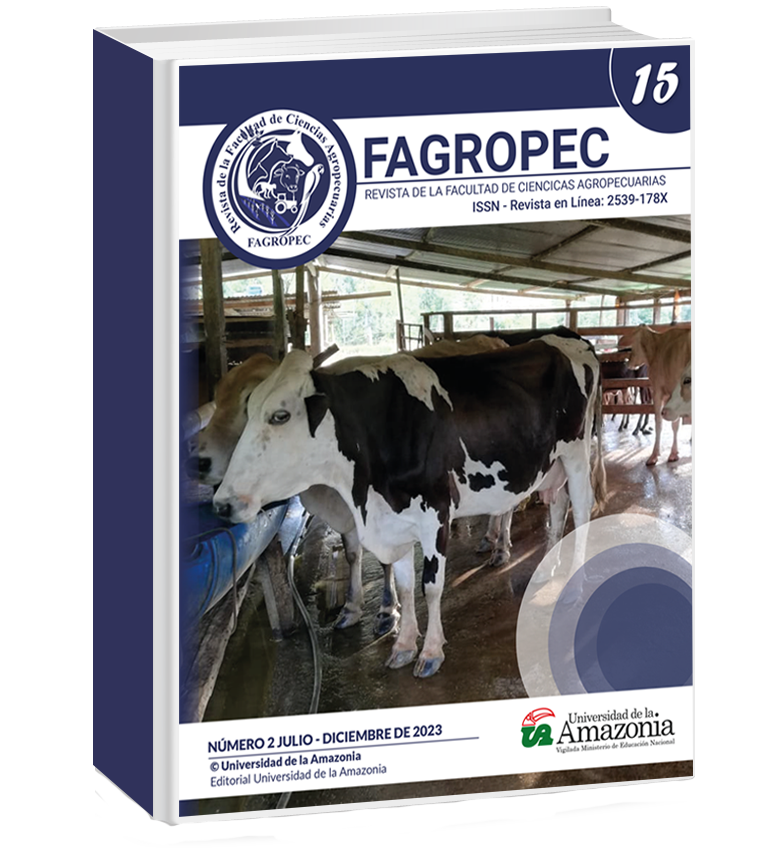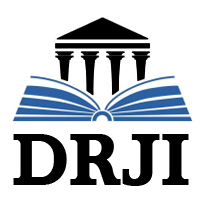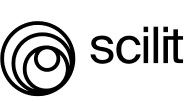Effects of Naproxen as an Emerging Contaminant in Aquatic Ecosystems
DOI:
https://doi.org/10.47847/fagropec.v15n2a4Keywords:
conservation medicine, public health, waterAbstract
This document raised the need to analyze the effects of naproxen as an emerging contaminant in aquatic ecosystems, for which the respective documentary review was carried out on its implications on biodiversity, its impact and affectation to key aquatic organisms, where it was possible to show that even in low concentrations, naproxen causes significant alterations in biological processes of aquatic organisms, in addition its prolonged exposure negatively affects the development,
reproduction and survival of different species, among which fish, gastropods, bivalves, crustaceans, among others, stand out, which are critical links in the trophic chains, generating deformities, reduced fertility, even increased mortality.
Likewise, bioaccumulation and biomagnification amplify their presence at higher trophic levels, affecting the fauna and the stability of the ecosystem. In such a way, these impacts compromise aquatic biodiversity, altering population dynamics and reducing the capacity of ecosystems to provide vital ecological services, where key species are the most vulnerable to these impacts. This is why the need for strategies for regulation, mitigation and treatment of wastewater to protect the integrity of aquatic ecosystems is highlighted.
Downloads
References
Aguilar Boluarte, B. D., & Martin Espinoza, K. I. (2021). Revisión sistemática: tipos de bioindicadores para la identificación de la calidad de ecosistemas acuáticos. https://repositorio.ucv.edu.pe/handle/20.500.12692/83655
Ahn, C., Kim, J., Lee, Y., & Kim, S. (2022). Risk assessment of Naproxen and Sulfamethoxazole in Aquatic Ecosystem. 22(3), 179-188. https://www.earticle.net/Article/A431130
Alean Flórez, J., Márquez Méndez, D., Burgos Núñez, S., Montes, G. E., & Negrete, J. M. (2021). Productos farmacéuticos y de cuidado personal presentes en aguas superficiales, de consumo humano y residuales en el departamento de Córdoba, Colombia. Revista de Investigación Agraria y Ambiental, 12(2), 179-197. https://www.proquest.com/docview/2556887125
Barros, S., Coimbra, A. M., Herath, L. A., Alves, N., Pinheiro, M., Ribeiro, M., ... & Neuparth, T. (2024). Are Environmental Levels of Nonsteroidal Anti-Inflammatory Drugs a Reason for Concern? Chronic Life-Cycle Effects of Naproxen in Zebrafish. Environmental Science & Technology. https://doi.org/10.1021/acs.est.4c05599
Bigagli Navarro, D. (2022). Eliminación de antiinflamatorios no esteroideos mediante oxidación electroquímica con ánodos basados en sustratos textiles (Doctoral dissertation, Universitat Politècnica de València). https://riunet.upv.es/handle/10251/185942
Calma, M. L., & Medina, P. M. B. (2020). Acute and chronic exposure of the holometabolous life cycle of Aedes aegypti L. to emerging contaminants naproxen and propylparaben. Environmental Pollution, 266, 115275. https://doi.org/10.1016/j.envpol.2020.115275
Camargo, A., & Camacho, J. (2019). Convivir con el agua. Revista Colombiana de Antropología, 55(1), 7-25. http://www.scielo.org.co/scielo.php?pid=S0486-65252019000100007&script=sci_arttext
Can Ubando, L. C. (2021). Capacidad de degradación de antiinflamatorios no esteroideos por bacterias. http://ri.uaemex.mx/handle/20.500.11799/112602
Castro Fernández, J. A. (2022). Remoción electroquímica de fármacos empleando un reactor continuo con electrodos modificados con óxidos de metales de transición. Mundo Nano. Revista Interdisciplinaria en Nanociencia y Nanotecnología, 9(16), 148. https://doi.org/10.22201/ceiich.24485691e.2016.16.56909
Cazzaniga, N., Varga, Z., Nicol, E., & Bouchonnet, S. (2020). UV-visible photodegradation of naproxen in water–Structural elucidation of photoproducts and potential toxicity. European Journal of Mass Spectrometry, 26(6), 400-408. https://doi.org/10.1177/1469066720973412
Checa Artos, M., Sosa Del Castillo, D., Ruiz Barzola, O., & Barcos-Arias, M. (2021). Presencia de productos farmacéuticos en el agua y su impacto en el ambiente. Bionatura, 6(1), 1618-1627. https://doi.org/10.21931/RB/2021.06.01.27
Clàriaa, J. (2001). Los nuevos antiinflamatorios. Medicina Integral. Vol. 38. Núm. 4. Páginas 175-183. https://www.elsevier.es/es-revista-medicina-integral-63-articulo-los-nuevos-antiinflamatorios-13018802
Contreras-Almazo, I. A. E., & González-Rentería, M. (2022). Bivalvos, organismos modelo en el biomonitoreo del riesgo ecotoxicológico de los antinflamatorios no esteroideos (AINE) para los ecosistemas acuáticos. Ecosistemas, 31(2), 2167-2167. https://www.revistaecosistemas.net/index.php/ecosistemas/article/view/2167
Cory, W. C., Welch, A. M., Ramirez, J. N., & Rein, L. C. (2019). Naproxen and its phototransformation products: persistence and ecotoxicity to toad tadpoles (Anaxyrus terrestris), individually and in mixtures. Environmental toxicology and chemistry, 38(9), 2008-2019. https://doi.org/10.1002/etc.4514
Cuñat, Z. A., & Ruiz, M. J. (2016). Ensayos de ecotoxicidad de los fármacos y efectos tóxicos en el medio ambiente: Revisión. Revista de Toxicología, 33(2), 108-119. Asociación Española de Toxicología. http://www.redalyc.org/articulo.oa?id=91949104007(91949104007)
Davison, H., Macadam, C. R., & Smith, D. (2021). Pharmaceuticals in freshwater environments and their potential effects on freshwater invertebrates. https://cdn.buglife.org.uk/2021/11/Pharmaceuticals-in-freshwater-environments-and-their-potential-effects-on-freshwater-invertebrates-1.1.pdf
DellaGreca, M., Brigante, M., Isidori, M., Nardelli, A., Previtera, L., Rubino, M., & Temussi, F. (2003). Phototransformation and ecotoxicity of the drug Naproxen-Na. Environmental Chemistry Letters, 1, 237-241. https://doi.org/10.1007/s10311-003-0045-4
Duarte, C. M. (2006). La exploración de la biodiversidad marina: Desafíos científicos y tecnológicos. Comunicación y Gestión Ambiental ALAIRE, S.L., 158 p. https://www.fbbva.es/wp-content/uploads/2017/05/dat/DE_2006_Exploracion_biodiversidad.pdf
Gagné, F., Blaise, C., Fournier, M., & Hansen, P. D. (2006). Effects of selected pharmaceutical products on phagocytic activity in Elliptio complanata mussels. Comparative Biochemistry and Physiology Part C: Toxicology & Pharmacology, 143(2), 179-186. https://doi.org/10.1016/j.cbpc.2006.01.008
García-Gómez, C., Gortáres-Moroyoqui, P., & Drogui, P. (2011). Contaminantes emergentes: efectos y tratamientos de remoción. Química Viva, 10(2), 96-105. https://www.redalyc.org/pdf/863/86319141004.pdf
García-Medina, A. L., Marcela, Galar-Martínez, M., García-Medina, S., Gómez-Oliván, L. M., & Razo-Estrada, C. (2015). Naproxen-enriched artificial sediment induces oxidative stress and genotoxicity in Hyalella Azteca. Water, Air, & Soil Pollution, 226, 1-10. https://doi.org/10.1007/s11270-015-2454-y
García-Morales, M. A., Contreras-Rodríguez, A., Arreola, A., Guadalupe, M., Ruiz, E. A., & Morales-García, M. R. (2021). Manejo de residuos de fármacos: una breve revisión. Revista internacional de contaminación ambiental, 37. https://www.scielo.org.mx/pdf/rica/v37/0188-4999-rica-37-329.pdf
Gastañaga, M. C. (2018). Agua, saneamiento y salud. Revista Peruana de Medicina Experimental y Salud Publica, 35, 181-182. https://www.scielosp.org/article/rpmesp/2018.v35n2/181-182/es/
Gil, M. J., Soto, A. M., Usma, J. I., & Gutiérrez, O. D. (2012). Contaminantes emergentes en aguas, efectos y posibles tratamientos. Producción+ limpia, 7(2), 52-73. http://www.scielo.org.co/scielo.php?pid=S1909-04552012000200005&script=sci_arttext
Gómez Martínez, F. G., Ramírez García, J., García Fabila, M. G., & Gómez Hinojos, A. (2020). Identificación de compuestos de degradación como evidencia de la contaminación de efluentes de hospitales por Naproxeno. [Identification of degradation compounds as evidence of contamination of hospital effluents by Naproxen] Revista Internacional De Contaminación Ambiental = International Journal of Environmental Pollution, Suppl. Memorias XVIII Congreso Internacional y XXIV Congreso Nacional De Ciencias Ambientales, 36, 79. https://www.proquest.com/docview/2386330757
Górny, D., Guzik, U., Hupert-Kocurek, K., & Wojcieszyńska, D. (2019). Naproxen ecotoxicity and biodegradation by Bacillus thuringiensis B1 (2015b) strain. Ecotoxicology and environmental safety, 167, 505-512. https://doi.org/10.1016/j.ecoenv.2018.10.067
Instituto Nacional del Cáncer. (2024). Naproxeno. Diccionario de cáncer del NCI. https://www.cancer.gov/espanol/publicaciones/diccionarios/diccionario-cancer/def/naproxeno
Isidori, M., Lavorgna, M., Nardelli, A., Parrella, A., Previtera, L., & Rubino, M. (2005). Ecotoxicity of naproxen and its phototransformation products. Science of the Total Environment, 348(1-3), 93-101. https://doi.org/10.1016/j.scitotenv.2004.12.068
Isidori, M., Lavorgna, M., Nardelli, A., Pascarella, L., & Parrella, A. (2005). Toxic and genotoxic evaluation of six antibiotics on non-target organisms. Science of the total environment, 346(1-3), 87-98. https://doi.org/10.1016/j.scitotenv.2004.11.017
Keb Canul, A. F. (2022). Mecanismo de los AINES y antiinflamatorios derivados para el control del dolor y la inflamación. Uso de antiinflamatorios en odontología. Revista ADM Órgano Oficial de la Asociación Dental Mexicana, 79(1), 38-47. https://www.medigraphic.com/cgi-bin/new/resumen.cgi?IDARTICULO=103817
Kumar, R., Qureshi, M., Vishwakarma, D. K., Al-Ansari, N., Kuriqi, A., Elbeltagi, A., & Saraswat, A. (2022). A review on emerging water contaminants and the application of sustainable removal technologies. Case Studies in Chemical and Environmental Engineering, 6, 100219. https://doi.org/10.1016/j.cscee.2022.100219
Kwak, K., Ji, K., Kho, Y., Kim, P., Lee, J., Ryu, J., & Choi, K. (2018). Chronic toxicity and endocrine disruption of naproxen in freshwater waterfleas and fish, and steroidogenic alteration using H295R cell assay. Chemosphere, 204, 156-162. https://doi.org/10.1016/j.chemosphere.2018.04.035
Lakshmi, S. D., Geetha, B. V., & Vibha, M. (2024). From prescription to pollution: The ecological consequences of NSAIDs in aquatic ecosystems. Toxicology Reports, 101775. https://doi.org/10.1016/j.toxrep.2024.101775
Lazo Fraga, A. R., Viltres Portales, M., Díaz García, A. L., Estévez Hernández, O. L., González Quintela, M., Bustamante Sánchez, M., García Zaldívar, O., Peláiz Barranco, A., Díaz Villavicencio, L., Balbín Tamayo, A. I., & Luaces Alberto, M. D. (2024). Desarrollo de sensores electroquímicos para la detección de metales tóxicos y contaminantes emergentes. Anales de la Academia de Ciencias de Cuba, 14(2), 1597. https://revistaccuba.sld.cu/index.php/revacc/article/view/1597
López, D. M., & Soto, M. F. V. (2020). Contaminantes emergentes en diferentes matrices de aguas y tratamientos alternativos para su eliminación. Repositorio Institucional Unicordoba. https://repositorio.unicordoba.edu.co/bitstreams/d040daa5-e9f1-4271-aa2f-3c0430e1fabb/download
Lorenzo., A. Moreno, I. Lizasoain, J.C. Leza, M.A. Moro, A. Portóles, (2008). Farmacología Básica y Clínica. Buenos Aires: Panamericana. https://dialnet.unirioja.es/servlet/libro?codigo=742163
Mancilla Villa, O. R., Gómez Villaseñor, L., Olguín López, J. L., Guevara Gutiérrez, R. D., Hernández Vargas, O., Ortega Escobar, H. M., ... & Palomera García, C. (2022). Contaminación orgánica por coliformes, Nitrógeno y Fósforo en los ecosistemas acuáticos de la cuenca Ayuquila-Armería, Jalisco, México. Biotecnia, 24(1), 5-14. https://www.scielo.org.mx/scielo.php?pid=S1665-14562022000100005&script=sci_arttext
Marimon Angulo, M., & Rodríguez Díaz, Y. J. (2024). Influencia de las Ptar de la Ciudad de Valledupar y el Municipio de la Paz en la Incorporación de los Contaminantes Emergentes Gemfibrozilo y Progesterona en el Río Cesar. Estudios Y Perspectivas Revista Científica Y Académica, 4(3), 152–169. https://estudiosyperspectivas.org/index.php/EstudiosyPerspectivas/article/view/380
Martínez Carrasco, N., & Cuautle, M. (2019). Impact of pharmaceutical waste on biodiversity. Ecopharmacovigilance: Multidisciplinary Approaches to Environmental Safety of Medicines, 235-253. https://doi.org/10.1007/698_2017_151
Maseda, D., & Ricciotti, E. (2020). NSAID–gut microbiota interactions. Frontiers in pharmacology, 11, 1153. https://doi.org/10.3389/fphar.2020.01153
Mason, L., Edwards, J. E., Moore, R. A., & McQuay, H. J. (2005). Dosis única oral de naproxeno y naproxeno sódico para el dolor postoperatorio agudo. Biblioteca Cochrane Plus, (2). https://www.rima.org/web/medline_pdf/CD004234-ES.pdf
Moreno Ríos, A. L., Gutiérrez-Suarez, K., Carmona, Z., Ramos, C. G., & Silva Oliveira, L. F. (2022). Pharmaceuticals as emerging pollutants: Case naproxen an overview. Chemosphere, 291, 132822. https://doi.org/10.1016/j.chemosphere.2021.132822
Morin-Crini, N., Lichtfouse, E., Liu, G., Balaram, V., Ribeiro, A. R. L., Lu, Z., ... & Crini, G. (2022). Worldwide cases of water pollution by emerging contaminants: a review. Environmental Chemistry Letters, 20(4), 2311-2338. https://doi.org/10.1007/s10311-022-01447-4
Näslund, J., Asker, N., Fick, J., Larsson, D. J., & Norrgren, L. (2020). Naproxen affects multiple organs in fish but is still an environmentally better alternative to diclofenac. Aquatic Toxicology, 227, 105583. https://doi.org/10.1016/j.aquatox.2020.105583
Organización de las Naciones Unidas para la Educación, la Ciencia y la Cultura. (2020). Agua y Cambio climático. UNESCO. https://www.pseau.org/outils/ouvrages/unesco_informe_mundial_de_las_naciones_unidas_sobre_el_desarrollo_de_los_recursos_hidricos_2020_agua_y_cambio_climatico_datos_y_cifras_2020.pdf
Papaioannou, C., Geladakis, G., Kommata, V., Batargias, C., & Lagoumintzis, G. (2023). Insights in Pharmaceutical Pollution: The Prospective Role of eDNA Metabarcoding. Toxics, 11(11), 903. https://doi.org/10.3390/toxics11110903
Parolini, M. (2020). Toxicity of the Non-Steroidal Anti-Inflammatory Drugs (NSAIDs) acetylsalicylic acid, paracetamol, diclofenac, ibuprofen and naproxen towards freshwater invertebrates: A review. Science of The Total Environment, 740, 140043. https://doi.org/10.1016/j.scitotenv.2020.140043
Pérez-Madruga, Y., López-Padrón, I., & Reyes-Guerrero, Y. (2020). Las algas como alternativa natural para la producción de diferentes cultivos. Cultivos Tropicales, 41(2). http://scielo.sld.cu/scielo.php?pid=S0258-59362020000200010&script=sci_arttext&tlng=pt
Prakash, S. (2021). Impact of Climate change on Aquatic Ecosystem and its Biodiversity: An overview. International Journal of Biological Innovations, 3(2). https://doi.org/10.46505/IJBI.2021.3210
Reynolds, J. E. F. (1993). Martindale, The Extrapharmacopoeia. 30th edition, The Pharmaceutical Press, London, pp. 25-26. https://www.scirp.org/reference/referencespapers?referenceid=996313
Rivera-Aguirre, J. (2021). Abuso y contraindicaciones en el uso de antiinflamatorios no esteroideos. Revista de Educación e Investigación en, 66. https://medicinadeemergencias.com/portadas/reie_21_3_2.pdf#page=25
Rodríguez Andújar, A. B. (2020). Compuestos farmacéuticos en ecosistemas acuáticos: Evidencias de su toxicidad en el organismo modelo Daphnia magna. Universidad de Jaén. https://crea.ujaen.es/handle/10953.1/12301?mode=full
Rojas Vásquez, D. A. (2021). Evaluación de encapsulados para el control de contaminantes emergentes en aguas. https://repository.uamerica.edu.co/handle/20.500.11839/8439
Romero García, X., Labra López, L., & Jiménez Vargas, S. (2022). Adaptación de cepas del género Pseudomonas provenientes de composta para la degradación de naproxeno sódico. https://repositorio.iberopuebla.mx/handle/20.500.11777/5575
Silva Agredo, J., Giraldo Aguirre, A. L., & Torres Palma, R. A. (2013). Degradación sonoquímica de naproxeno modelo para el tratamiento de aguas que contienen productos farmacéuticos. https://bibliotecadigital.udea.edu.co/handle/10495/29361
Teherán, E., Faraji, A. R., Shojaei, N., Shahinmehr, S., Najafi, A., Hekmatian, Z., ... & Bornas, B. (2023). An overview of the characteristics, toxicity, and treatment methods for the degradation of pharmaceutically active compounds: Naproxen as a case study. Journal of Environmental Chemical Engineering, 11(6), 111575. https://doi.org/10.1016/j.jece.2023.111575
Trombini, C., Blasco, J., & Hampel, M. (2020). Ibuprofen and diclofenac: effects on freshwater and marine aquatic organisms–are they at risk?. Non-steroidal anti-inflammatory drugs in water: emerging contaminants and ecological impact, 161-189. https://doi.org/10.1007/698_2020_548
Tyumina, E. A., Bazhutin, G. A., Cartagena Gómez, A. D. P., & Ivshina, I. B. (2020). Nonsteroidal anti-inflammatory drugs as emerging contaminants. Microbiology, 89, 148-163. https://doi.org/10.1134/S0026261720020125
Wojcieszyńska, D., & Guzik, U. (2020). Naproxen in the environment: its occurrence, toxicity to nontarget organisms and biodegradation. Applied microbiology and biotechnology, 104(5), 1849-1857. https://doi.org/10.1007/s00253-019-10343-x
Xu, C., Niu, L., Guo, H., Sun, X., Chen, L., Tu, W., ... & Liu, J. (2019). Long-term exposure to the non-steroidal anti-inflammatory drug (NSAID) naproxen causes thyroid disruption in zebrafish at environmentally relevant concentrations. Science of the total environment, 676, 387-395. https://doi.org/10.1016/j.scitotenv.2019.04.323
Zarazúa Morín, M. E., Alfaro Cruz, M. R., & Torres Martínez, L. M. (2024). Medicamentos y sus consecuencias como contaminantes emergentes. Ciencia UANL, 27(123), 8-15. https://www.researchgate.net/publication/377354872
Zenker, A., Cicero, M. R., Prestinaci, F., Bottoni, P., & Carere, M. (2014). Bioaccumulation and biomagnification potential of pharmaceuticals with a focus to the aquatic environment. Journal of environmental management, 133, 378-387. https://doi.org/10.1016/j.jenvman.2013.12.017
Downloads
Published
Issue
Section
License

This work is licensed under a Creative Commons Attribution-NonCommercial-ShareAlike 4.0 International License.
























